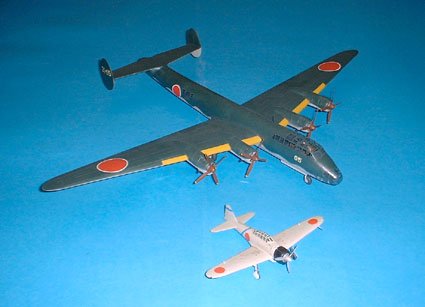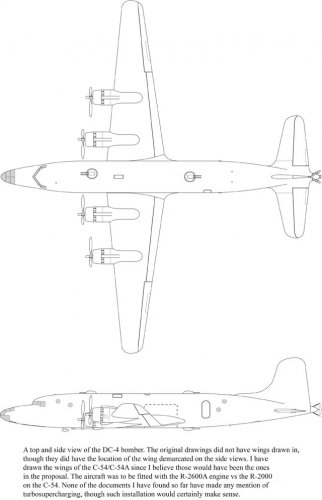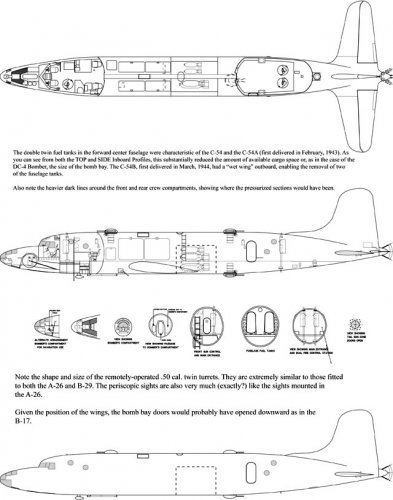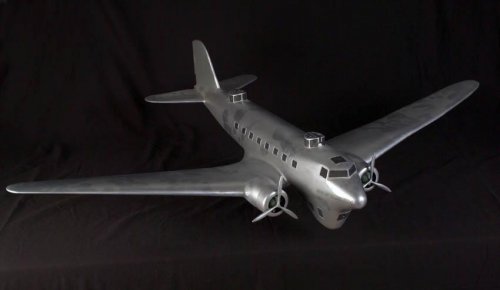Hood,
This is one of the "joys" of research!
Craig Kaston, one of the authors of ASPII, came up with those two versions in a source to which I have no access. I came up with my drawings from a source to which HE had no access. THe story of the DC-4E bomber was gathered by me through in-depth (and VERY lucky) research at NARA II in a file I had pulled mostly in desperation and of which Craig had no knowledge at all. Craig has to get permission from his source before I can officially have access to his drawings and any materials accompanying them.
In the meantime, I have come across an entry for the DC-4E bomber in a Type Specification dating from March, 1938, nearly two years before CP 39-645. This brings up TONS of questions yet to be answered: I assume it was an entry of the same configuration seen in 39-645, but maybe not. If so, did the AAF just throw it into the consideration on 645 because they then had three complete proposals with one to toss so they could choose both the B-24 and the Boeing entries which were newer versions of the B-17? The Type Specification mentioned earlier has a TON of entrees, including one from Sikorsky and one from the Materiel Division. The drawings accompanying all the entries are listed in the documents, but are not IN the documents, and no one seems to have any idea where they might be. One of the Boeing entrees is for a Model 299G. What in the devil is a Model 299G? Still no word from Boeing.
This is not really anything new among serious researchers and it just takes time to gather everything. The "gatherers" who seem to write most of the books and monographs will just steal this info and use it in one of their missives, almost never crediting their sources. One sees that a lot on HERE, too.
Anyway, I hope this answers your question as this is all the information there is to date (that I'm wiling to share) about what has transpired.
AlanG




